Pros
-
Sleek and compact design
-
Comfy fit
-
Clean, effervescent sound
Cons
-
Slightly buggy performance
-
No transparency mode
-
Poor call quality
(Editor's note: Our initial review noting "buggy" performance, such as occasional swapping of the soundstage between stereo and mono, has expanded beyond the issues we encountered. Multiple Pixel Buds users have reported similar issues, most notably Bluetooth cut-outs—which we experienced only a few times in testing. Google has addressed the issue in a blog post and promised a fix is coming. We'll update this review when more information is available.)
The redesigned Pixel Buds stand in stark contrast to the bulbous, tangled mess of the previous model, which were connected by a braided cable that made them a hassle to use. Now fully wireless—and markedly smaller—the only notable design legacy the new buds carry over from their predecessors are the rounded caps at their exteriors that act as sensors for touch controls.
Google has made plenty of other upgrades, too, from IPX4 water resistance to future-looking features like Adaptive Sound and hands-free Google Assistant.
While still in need of refinement, the new Pixel Buds are a much more attractive option than their predecessors, and for Google, they’re a solid foundation on which to build.
About the Pixel Buds
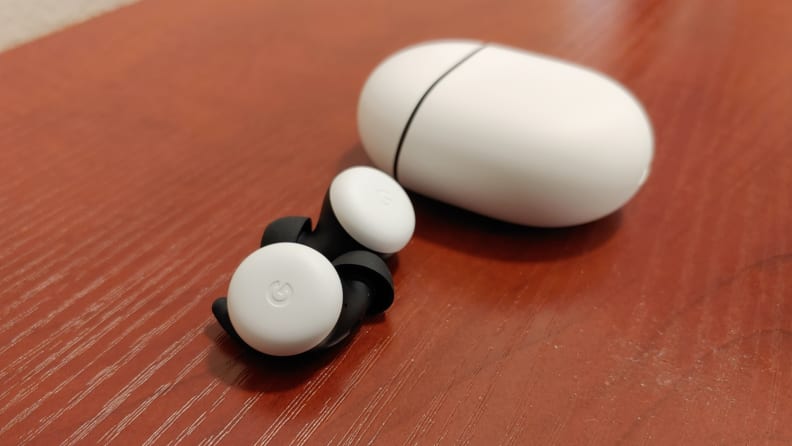
The 2020 Pixel Buds are true wireless earbuds, meaning there are no wires connecting them at all. Unlike Apple’s AirPods (and the previous Pixel Buds), they’re designed to fit flush with your ears, while rubberized rear stabilizers help keep them firmly in place.
Along with the charging case, the Pixel Buds ship with a sizable USB-C to USB-A charging cable, a quick-start guide, and three sizes of silicone ear tips.
Here’s a breakdown of their major specs:
- Pricing: $179
- Battery life: Up to 5 hours of playback, 24 hours total with charging case
- Rapid charging: Up to 2 hours of playback on 10 minutes charge
- Wireless charging: Qi-certified charging case
- Colors: Clearly White, Almost Black, Quite Mint, Oh So Orange
- Speakers: Custom 12 mm dynamic drivers
- Sensors: Dual IR proximity sensors for automatic play/pause
- Connectivity: Bluetooth 5.0
- Water resistance: IPX4
- Fit: small, medium, and large ear tips, stabilizer fins
- Weight: 5.3 grams per earbud, 66.7 grams with case
What we like:
A nifty little package
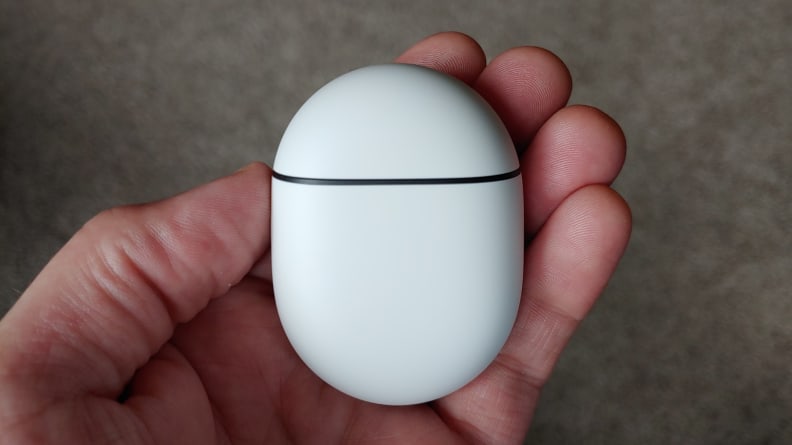
The Pixel Buds’ box does not waste space. In fact, I can’t recall receiving a smaller package from any headphone maker. The case and buds themselves are equally compact, striking a futuristic vibe.
Simply put, Google has nailed the design here, applying the same tactics that made the AirPods a monster hit, but with a Google twist.
A satisfying pop of the cap reveals the tiny buds resting on magnetic stands, while their fins (called “stabilizer arcs”) seem to wave hello. Dual LEDs, including one between the buds and a second peering out beneath the case’s opaque shell, indicate pairing and charge status.
The buds themselves are as ergonomic as they are tiny, making them easy to put in and remove, while controls are simple and relatively responsive. The hefty case feels good in your hands, disappears in your pocket, and with its rounded edges and flattened front and back, it begs to be skipped across a body of water—in a good way.
A comfy fit (that looks good too)
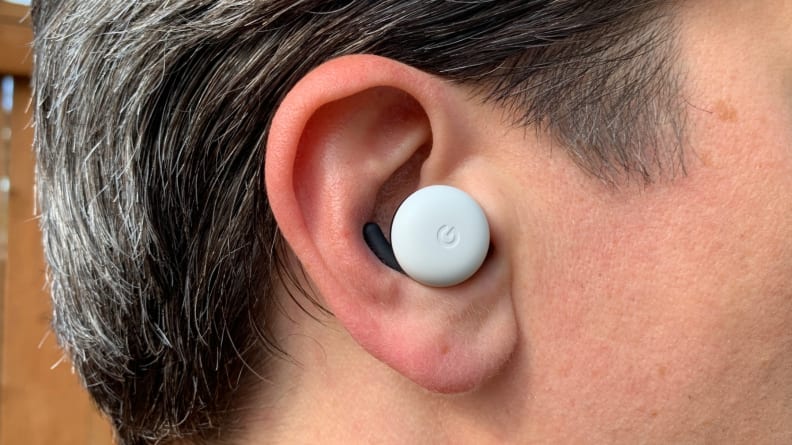
Speaking of ergonomics, where the first Pixel Buds felt awkward, the second-gen are among the most comfortable true wireless earbuds I’ve come across. Nearly all wireless earbuds tend to wear on my ears after a few hours, but these hold out longer than most thanks in large part to those stabilizer arcs; they’re rigid enough to stay put, but flexible enough to mitigate pinching.
The new Pixel Buds are also among the few true wireless earbuds that fit nearly flush with my ears, offering enough style to stand out while avoiding the whole Frankenstein-bolt look.
Accessible, detailed sound
The new sound signature rises above what you’ll get from both the original model and the AirPods, offering more clarity, better stereo separation, and a penchant for detail that’s both enjoyable and accessible.
My favorite aspect of the new sound is the wide stereo image, which allows each instrument to find its own space. A particularly fun example came in The Kinks’ “Stranger,” where the piano track in the left channel seemed to be dangling by a thread at the edge of the soundstage.
The detail provided stands tall with other top picks in their price class, and I found myself digging some of the subtler moments, from the kiss at the attack of ‘80s synthesizers to the fluid brass and horns in old Sinatra tunes.
That said, bassheads will likely find the lack of thump in the lower register unsatisfying, especially when compared to the booming sound of buds like Jabra’s Elite and Elite Active 75t and Beats’ Powerbeats and Powerbeats Pro.
In general, the sound signature sits on the lighter side, especially for dialogue, which at times edged a bit sharper than I’d like. Though I’m not a fan of the bassiest buds, I did find myself wishing for more weight in the lower midrange and, occasionally, more punch below, especially for hip-hop and pop songs like The Weeknd’s “Starboy.”
Overall, while I could use a little more oomph, I like what Google’s got going here.
Google on standby
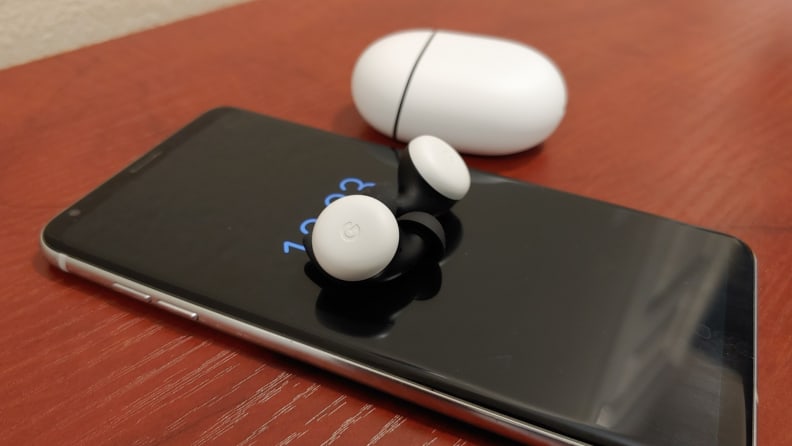
Taking a page from Apple’s playbook, the new P-buds offer Google’s intrepid assistant on command for Android phones, allowing you to simply say “Hey Google” or “OK Google” to engage.
It’s a simple thing, but setting aside the potential privacy concerns of an “always listening” device, it’s an extremely convenient way to deal with a digital assistant. The response is also lightning fast, allowing you to quickly and easily do everything from a Google search or map query to controlling Spotify playback.
All the major AirPods features (and more)
The Pixel Buds (unsurprisingly) do a good job of checking off all the major AirPods boxes, many of which are accessed by the Pixel Buds app or, for Pixel phone owners, built-in directly.
Along with the ability to call your Google Assistant on command, the earbuds offer favorites like proximity pairing for Android phones, the ability to use one earbud at a time, auto play/pause when pulling them in and out, wireless charging, and a Find Device feature.
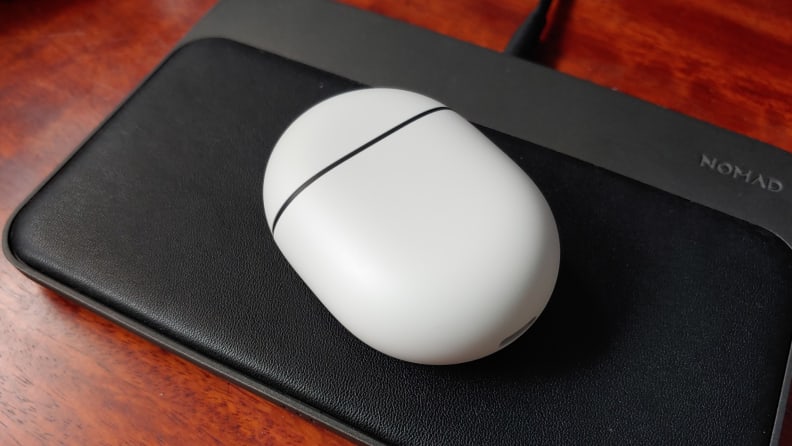
They also offer options the AirPods don’t, like onboard volume control on both buds (without the need to trade out other functionality), solid water-resistance, a secure fit, and even some Google-unique features. Unfortunately, some of these features worked better than others in testing, while some didn’t work at all.
What we don’t like:
Special features aren’t so special
Unlike the vast majority of comparable earbuds, the Pixel Buds don’t include any form of transparency mode, which is designed to pipe in sound from your environment to keep you safe and aware. There’s also no form of active noise cancellation—at this price, it would have been a stretch, but it also would have been a coup.
Instead, Google includes Adaptive Sound, designed to ramp up the volume when the bustling world around you gets too loud. It’s an intriguing idea, but as you might guess, it comes with the potentially dangerous problem of exposing your ears to hearing damage. Knowing this, Google made Adaptive Sound extremely modest, resulting in a feature that (thankfully) doesn’t blow out your eardrums, but also doesn’t really do much at all.
Whether it was nearby traffic, a bathroom fan, or even a room with loud music blasting, I couldn’t hear any notable effect with Adaptive Sound engaged. Finally, after blasting a hairdryer next to my ears, I heard a very modest increase and decrease in volume, both of which were highly delayed. There are rumors that Google may be working on alerts for sounds like dogs barking or alarms, which could be cool. But for now, Adaptive Sound is kind of useless.
The Pixel Buds’ other standout feature, Google Translate, is more useful—especially if you’re a travel nut—but like its incorporation in the original Pixel Buds, I’m not sure it does much you couldn’t just do with your Android phone and any other pair of earbuds. It’s nice to be able to initiate it without tapping on your phone, but it’s not exactly a boon to true wireless buds either.
Missing that AirPods polish
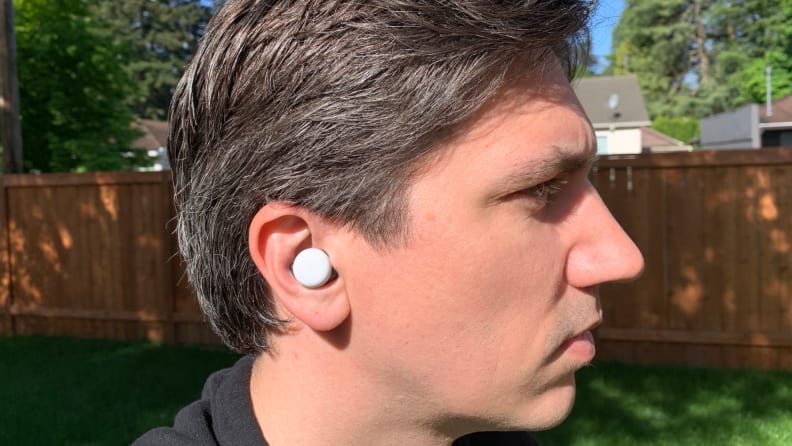
One of the best things about the AirPods is that everything works exactly as advertised, which was especially notable in the early days of true wireless earbuds (circa 2016). That’s not the case in all things for the Pixel Buds—at least not yet.
The Pixel Buds are designed to mimic AirPods by magically auto-pairing with Android phones, but I couldn't get them to do it with my LG G8. They were still extremely easy to pair, and there's a good chance I had a setting disengaged, but Google couldn't tell me which one.
More vexing is the fact that, in over a week of testing, I was never able to get Find Device to work. Again, that’s not the worst issue (unless you do lose your buds in the couch cushion), but it seemed to indicate that the Pixel Buds aren’t yet firing on all cylinders.
Perhaps most notable, the stereo image swapped between stereo and mono a few times in testing, while call quality was just bad. Voices seemed to warble and distort easily, and the overall sound was inconsistent.
Battery life is middling at best
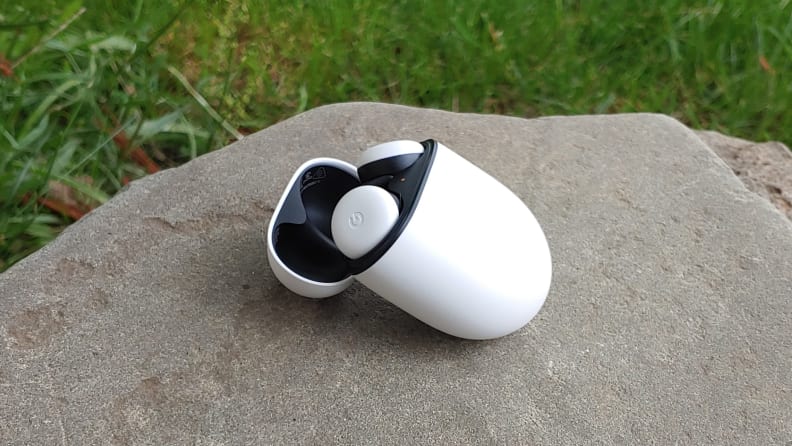
The Pixel Buds let you just squeeze out 5 hours of playback time at moderate volumes (or about 4 with Adaptive Sound). That isn’t terrible, at least in the near term, as most users are unlikely to use their earbuds for more than 5 hours at a time on average, and the case makes it simple to give them a charge in minutes.
Still, Apple’s AirPods hit that mark four years ago. Cut to 2020, and almost every major competitor opts for more, from Apple’s own Powerbeats Pro to buds from Jabra, Sony, Samsung, and others. Apple’s AirPods Pro still top out at 5 hours, but that’s also one of their primary flaws.
While 5 hours may cut it for now, it puts an expiration date on longevity.
Should you buy them?
Only if you adore the design
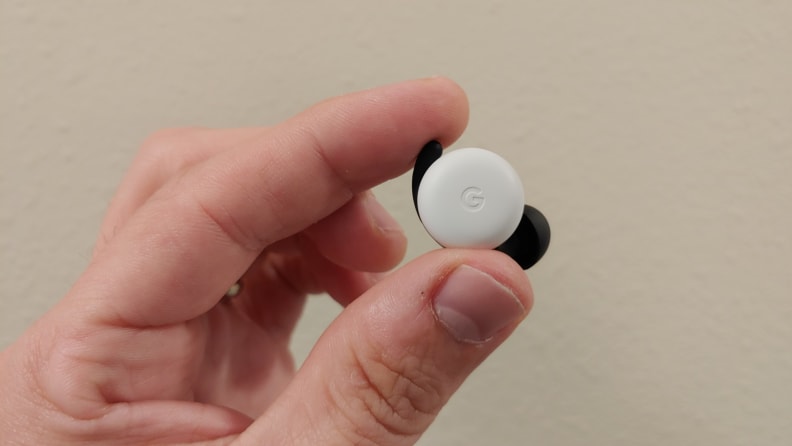
The new Pixel Buds are quite comfortable for true wireless earbuds, and I also think their overall aesthetic is among the best in the genre. Their feature set is limited, but decent, and their sound quality easily outdoes the AirPods (and many cheaper competitors).
On the other hand, there’s a cornucopia of true wireless earbuds with better value. Samsung's Galaxy Buds+ are an obvious choice, offering double the playback time and more features at a lower price. For rugged options, we suggest Jabra’s feature-packed Elite 75t and value-packed 65t lines. For noise canceling, you can’t beat Sony’s WF-1000XM3, which can often be found at $200 on sale.
For iOS users, the pricey AirPods Pro are a top-flight choice, while the original AirPods are still a more polished package, though sound and fit are worse, and a recent price drop suggests Apple may be readying their replacement.
While the Pixel Buds aren’t a bad option, their uneven performance and limited features put them in a tough spot at their price. Here’s hoping they're upgraded over time, as their core design is brilliant, making them well worth keeping tabs on.
Meet the tester
Hailing originally from Montana, Ryan parlayed his time working as a musician and audio engineer into a career in digital media in 2012. Since then he's had extensive experience as a writer and editor, including everything from op-eds and features to reviews on TVs, audio gear, smart home devices, and more.
Checking our work.
Our team is here to help you buy the best stuff and love what you own. Our writers, editors, and experts obsess over the products we cover to make sure you're confident and satisfied. Have a different opinion about something we recommend? Email us and we'll compare notes.
Shoot us an email
